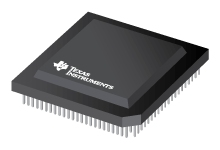SMJ320C6415DGADW60
Part Number: SMJ320C6415DGADW60
Manufacturer: Texas Instruments
Description: Digital Signal Processors & Controllers – DSP
Shipped from: Shenzhen/HK Warehouse
Stock Available: Check with us
ICRFQ.com - Electronic Components Distributor in China Since 2003

Part Number: SMJ320C6415DGADW60
Manufacturer: Texas Instruments
Description: Digital Signal Processors & Controllers – DSP
Shipped from: Shenzhen/HK Warehouse
Stock Available: Check with us
“The TMS320C64x DSPs are state-of-the-art digital signal processors that hold untapped potential. These devices, based on the cutting-edge VelociTI VLIW architecture, are capable of up to 5760 MIPS @ 720 MHz, making them perfect for demanding multi-functional and multi-channel uses. The TMS320C6000 DSP platform, of which the SMJ320C6415DGADW60 is a part, provides a dynamic combination of fast control operations and powerful numerical processing thanks to features such as a 600 MHz clock rate, 1.39 ns instruction cycle time, a cutting-edge VLIW DSP core, two coprocessors, an advanced memory architecture, external memory interfaces, an enhanced DMA controller, peripheral interfaces, and more. Using TMS320C64x DSPs, you may get high-performance DSP solutions quickly and affordably.”
“High-performance fixed-point DSPs on the TMS320C6000 platform can’t get much better than the SMJ320C6414, SMJ320C6415, and SMJ320C6416 devices that make up the TMS320C64x family of DSPs. The innovative and complex VelociTI.2 VLIW architecture-based C64x device is ideal for multi-functional and multi-channel applications. This DSP is code-compatible with the C6000 platform and can achieve speeds of up to 5760 MIPS at a clock rate of 720 MHz, making it an affordable option for solving high-performance DSP programming challenges. Because it combines the speed of high-speed controllers with the numerical processing power of array processors, the C64x is the best option for demanding DSP tasks.”
Regarding the TMS320C6000 DSP platform, the TMS320C64x DSP is the top dog in terms of performance. It uses Texas Instruments’ VelociTI.2 VLIW architecture has shown to be highly effective in real-world implementations of multichannel and multifunctional use cases. The C64x’s 720 MHz and 5760 MIPS make it an affordable solution for complex DSP development problems. The C64x provides powerful numerical capabilities and operational versatility with its 64 general-purpose 32-bit registers and eight functional units, including two 32-bit multipliers and six ALUs.
The VelociTI.2 enhancements built into the C64x boost performance and parallelism in essential software. It can produce either 2400 MMACS (four 32-bit multiply-accumulates each cycle) or 4800 MMACS (eight 8-bit MACs per cycle). As with other devices on the C6000 platform, it also features application-specific hardware logic, on-chip memory, and a variety of on-chip peripherals.
Viterbi Decoder Coprocessor (VCP) and Turbo Decoder Coprocessor (TDP) are two high-performance coprocessors included in the C6416 device for use in complex channel-decoding procedures (TCP). Over 500 7.95-Kbps AMR voice channels can be decoded by the VCP, while 36 384-Kbps or 6 2 Mbps turbo-encoded channels can be decoded by the TCP. These coprocessors connect with the central processing unit (CPU) through an EDMA controller and have tunable parameters.
The C64x uses a two-tiered cache system, with a 128K-bit direct-mapped L1P program cache, a 128K-bit 2-way set-associative L1D data cache, and an 8M-bit shared L2 memory/cache area. Three McBSPs, an 8-bit UTOPIA Slave port, three 32-bit timers, a 16-bit or 32-bit HPI, a PCI, sixteen general-purpose input/output (GPIO) pins, and two glueless external memory interfaces are all part of its peripheral set.
Last but not least, the C64x ships with a full suite of development tools, such as a state-of-the-art C compiler, an assembly optimizer, and a Windows debugger interface that gives insight into the execution of source code.
The C64x EDMA can support up to 64 EDMA channels, which handle both peripheral devices and external memory. The pairing of an event and a channel is predetermined for the C64x device; moreover, each EDMA channel is connected to a unique event. Even if the EDMA event enables registers have been set to deactivate the events, these particular occurrences will still be recorded in the EDMA event registers (ERL and ERH) (EERL, EERH). It is possible to separately specify the priority of each individual event inside the transfer parameters saved in the EDMA parameter RAM. For additional specific information regarding the EDMA module and how EDMA events are enabled, captured, processed, linked, chained, and cleared, among other things, see here.
In conclusion, the SMJ320C6415DGADW60 is a top-of-the-line fixed-point DSP that provides exceptional performance and various advanced features. The fact that it has a clock rate of 600 MHz and a capability of 4800 MIPS makes it an excellent choice for tough DSP programming tasks. Its advanced VLIW TMS320C64x DSP engine, coprocessors, caches, and peripheral interfaces make it a flexible and powerful solution. If you are looking for a DSP with a high level of performance, the SMJ320C6415DGADW60 is a product that you should give serious consideration to purchasing. And if you’re ready to take the next step, ICRFQ is here to help. Contact us today and let us help you get the best product at an affordable price.
WhatsApp us